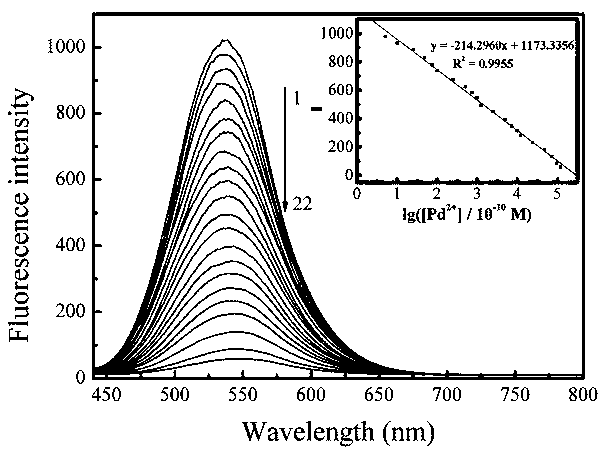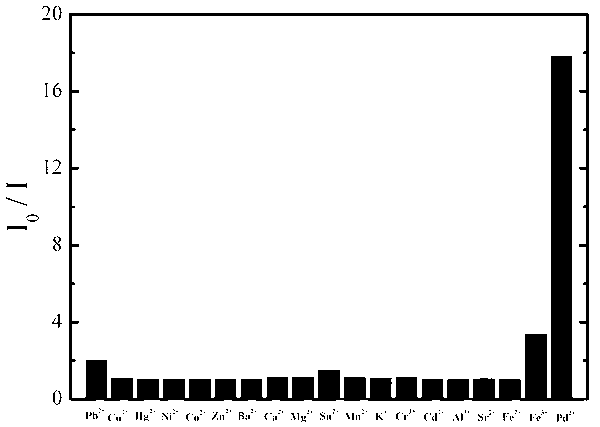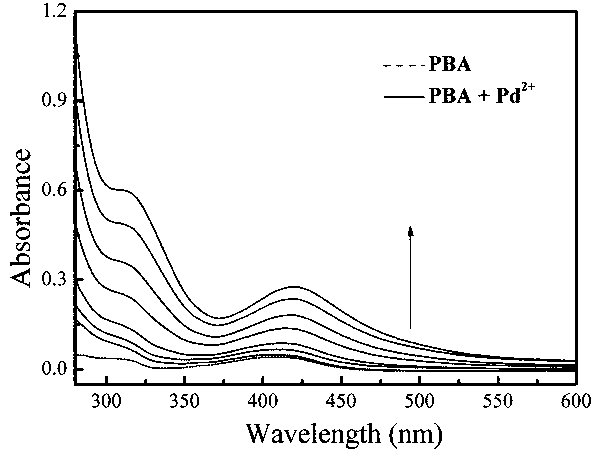Method for preparing poly (benzanthrone) fluorescent molecular sensor for detecting Pd <2+>
A technology of polybenzolaranthrone and fluorescent molecule, which is applied in the field of fluorescent chemical sensors, can solve the problems of adverse effects on the environment and organisms, and is rarely used, and achieves the effects of low synthesis cost, simple process and easy operation.
- Summary
- Abstract
- Description
- Claims
- Application Information
AI Technical Summary
Problems solved by technology
Method used
Image
Examples
Embodiment Construction
[0013] A detection of Pd 2+ The preparation method of the polybenzoxanthrone fluorescent molecular sensor comprises the following steps:
[0014] 1. Preparation of electrolyte solution: Add 0.046 g of benzoantrone to 21 ml of refined mixture of boron trifluoride ether and acetonitrile with a volume ratio of 2:1, and ultrasonically configure the electrolyte solution.
[0015] 2. Synthesis of polybenzoxanthrone: using a three-electrode system, the use area is 10 and 12 cm respectively 2 The platinum sheet was used as the working electrode and the auxiliary electrode, and Ag / AgCl was used as the reference electrode. Polybenzoxanthone was synthesized in one step by potentiostatic polymerization at 1.4 V for 30000s.
[0016] 3. Pretreatment of polybenzenthrone: After the electrosynthesis of polybenzenthrone, the electrode is taken out from the electrolyte solution, washed with ether to remove some oligomers or heteroions, and then the polymer is removed from the electrode Scrape ...
PUM
| Property | Measurement | Unit |
|---|---|---|
| recovery rate | aaaaa | aaaaa |
Abstract
Description
Claims
Application Information
 Login to View More
Login to View More - Generate Ideas
- Intellectual Property
- Life Sciences
- Materials
- Tech Scout
- Unparalleled Data Quality
- Higher Quality Content
- 60% Fewer Hallucinations
Browse by: Latest US Patents, China's latest patents, Technical Efficacy Thesaurus, Application Domain, Technology Topic, Popular Technical Reports.
© 2025 PatSnap. All rights reserved.Legal|Privacy policy|Modern Slavery Act Transparency Statement|Sitemap|About US| Contact US: help@patsnap.com



